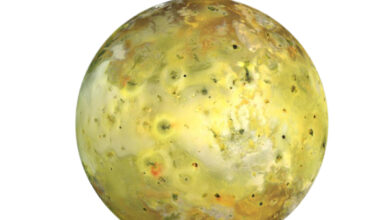
Is NASA saying if aliens exist, they’re keeping it a secret? It’s a question that has been asked for decades, and one that has yet to be answered definitively. However, recent developments from the National Aeronautics and Space Administration (NASA) may provide some insight into this age-old mystery.
In December 2020, NASA released a statement on its website about the possibility of extraterrestrial life. The agency said it was “unable to definitively answer whether or not aliens exist” but noted that “there is no credible evidence of alien life being found in our solar system to date.”
- What did NASA announce about aliens and whether or not they exist?
- How does the discovery of new planets lend credence to the idea that there could be life out there beyond our own planet?
- What would it mean for humans if we found evidence of intelligent alien life forms elsewhere in the universe?
- How do scientists think we might go about finding evidence of aliens, if it exists at all?
The agency also stated that it is “actively searching for signs of life beyond Earth” and pointed out that there are several ongoing missions designed to do just that. These include the Mars 2020 mission, which will search for signs of past microbial life on the Red Planet; the Transiting Exoplanet Survey Satellite (TESS), which is looking for exoplanets around other stars; and the James Webb Space Telescope (JWST), which will look for signs of life in distant galaxies.
While these missions may not reveal any definitive answers about alien life, they could help us better understand our place in the universe and provide us with valuable information about how common or rare intelligent life might be elsewhere in space.
So while we may never know for sure if aliens exist or not, NASA’s ongoing efforts to explore space could help us gain a better understanding of our place in the cosmos.
What did NASA announce about aliens and whether or not they exist?
NASA recently announced the formation of a team of 16 researchers to study unidentified aerial phenomena (UAP), commonly referred to as UFOs. The team will spend nine months studying UAPs and attempting to determine if they are evidence of alien life. NASA has also changed the terminology from “unidentified aerial phenomena” to “unidentified anomalous phenomena” in order to reflect the expanded scope of the study.
The team is made up of scientists, aviation officials, and a former astronaut, and their goal is to “lay the groundwork for future study” into whether or not aliens exist. While no life beyond Earth has ever been found, there is still hope that this research could provide insight into extraterrestrial life.
NASA’s Astrobiology program seeks to answer questions about the origin, evolution, distribution, and future of life in the universe. Scientists are researching how life on Earth may have evolved and if similar conditions exist elsewhere in our solar system or beyond. They are also exploring what kind of environments can support life and how we might detect it if it exists elsewhere in space.
Though there is no definitive proof yet that aliens exist, NASA’s new UFO study could be an important step towards uncovering more information about extraterrestrial life.

How does the discovery of new planets lend credence to the idea that there could be life out there beyond our own planet?
The discovery of new planets has lent credence to the idea that there could be life out there beyond our own planet. In recent years, astronomers have identified a multitude of exoplanets orbiting stars other than our sun, and many of these planets are located within their star’s habitable zone, meaning they could potentially support life. This is an exciting prospect for scientists who have long speculated about the possibility of alien civilizations existing in our universe.
The search for extraterrestrial life has been greatly aided by advances in technology such as NASA‘s Kepler mission and its extended incarnation, K2. These missions have enabled astronomers to identify Earth-sized planets that may be capable of hosting life. Additionally, scientists have recently identified a new class of habitable planets dubbed ‘Hycean’ planets which are more numerous and observable than Earth-like worlds.
Also Read – SpaceX to be fined $175,000 by US govt for failure to provide Starlink data
Moreover, researchers have estimated that 29 habitable planets are positioned to see Earth transit and intercept human broadcasts, indicating that intelligent life forms may be observing us from afar. This is further supported by the fact that the Milky Way is full of potential real estate for hosting alien civilizations.
Ultimately, the discovery of new planets has opened up a realm of possibilities for what lies beyond our own planet and has given us hope that we may one day make contact with an extraterrestrial species.
What would it mean for humans if we found evidence of intelligent alien life forms elsewhere in the universe?
Humans have long been fascinated by the possibility of intelligent alien life forms existing elsewhere in the universe. The idea has captivated us for centuries, and with recent advances in technology, we are closer than ever to finding evidence of extraterrestrial life.
The discovery of alien life would be a monumental moment in human history. It would challenge our understanding of the universe and our place within it, as well as open up new possibilities for exploration and collaboration. It could also provide insight into how other civilizations have evolved and developed over time, which could help us better understand our own development.
Ultimately, the discovery of intelligent alien life forms would be an incredible opportunity for humanity to learn more about ourselves and our place in the universe. We may never know what we will find out there, but one thing is certain: if we do find evidence of extraterrestrial life, it will be a momentous occasion that will change our view of the cosmos forever.
How do scientists think we might go about finding evidence of aliens, if it exists at all?
The search for evidence of alien life has been an ongoing quest for centuries, and scientists have developed a variety of methods to try and uncover any potential signs. One of the most popular theories is that we could detect radio signals from distant planets or stars, which could indicate the presence of intelligent life. Scientists are also looking into ways to detect biosignatures on other planets, such as methane or oxygen in the atmosphere, which could be a sign of microbial life. Additionally, astronomers are searching for exoplanets that may be capable of sustaining life by studying their size and temperature. Finally, researchers are using powerful telescopes to look for artifacts or structures that may have been created by an advanced civilization. While it’s impossible to know if aliens exist with certainty, these methods can help us get closer to finding out.




